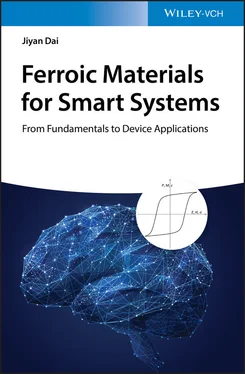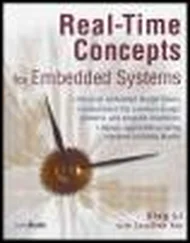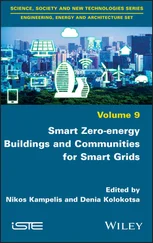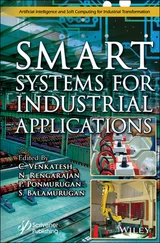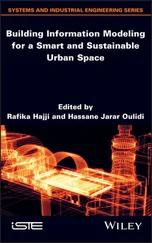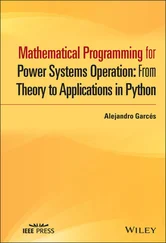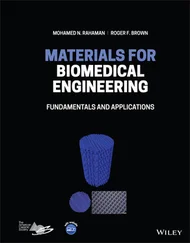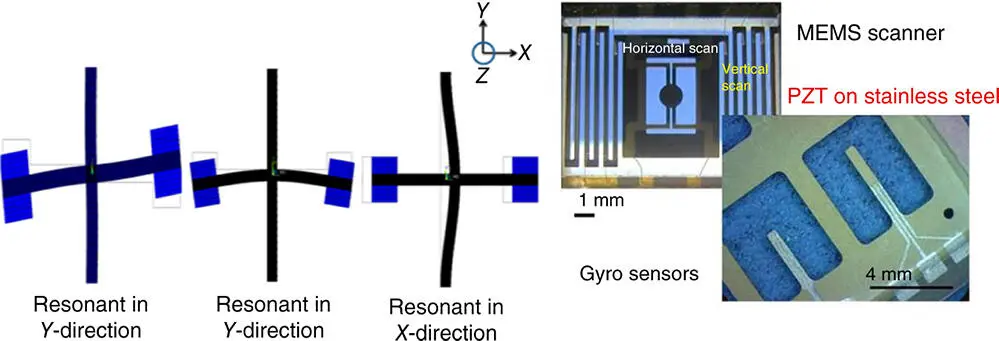
Figure 1.4FEM simulations of three resonant motions in a PZT‐based gyroscope and photo of a fabricated gyroscope.
Source: Adapted from Chang and Chen (2017).
A smart system needs sensors and actuators to realize the sensing functions such as distance, movement, and acceleration as well as actions. These sensors and actuators use smart materials to realize the conversion between different energies and moduli to electrical signals such as voltage, current, and capacitance. Of course, many sensor devices are made of semiconductors such as the FET, but this is not the focus of this book.
“ Smart material” is a very large concept, in fact, there is no stupid material (a joke), i.e. all materials are smart in some way since they all have their own properties and response to external stimuli. But in this book, we restrict the “smart materials” to those materials with “ferroic” characteristics. We focus on basic physics, materials science, structures, devices, and applications of ferroic materials for smart systems. The ferroic materials are usually classified as possessing one of the followings based on coupling of stimuli:
1 (i) Ferroelectric, which is also piezoelectric when electromechanically coupled and pyroelectric when thermoelectrically coupled.
2 (ii) Ferromagnetic, which is also magnetostrictive when magnetomechanically coupled.
3 (iii) Ferroelastic, which also includes shape memory when thermomechanically coupled.
Among these ferroics, we can see that strain, electric polarization and magnetization, and their interplay or coupling are involved. We call a material as ferroic material if it possesses at least one of the properties of ferroelectric, ferromagnetic and ferroelastic.
If we look at the diagram shown in Figure 1.5, we can see that the coupling and interplay between electricity, mechanics, magnetism, heat, and optics result in many smart functions, such as ferroelectric, piezoelectric, pyroelectric, ferromagnetic, electromechanical, etc. One book cannot cover all of them, but those belong to ferroic materials and devices especially in the form of thin films will be extensively introduced in this book. Before going into details, some application examples of ferroic materials in smart systems are given in this chapter.
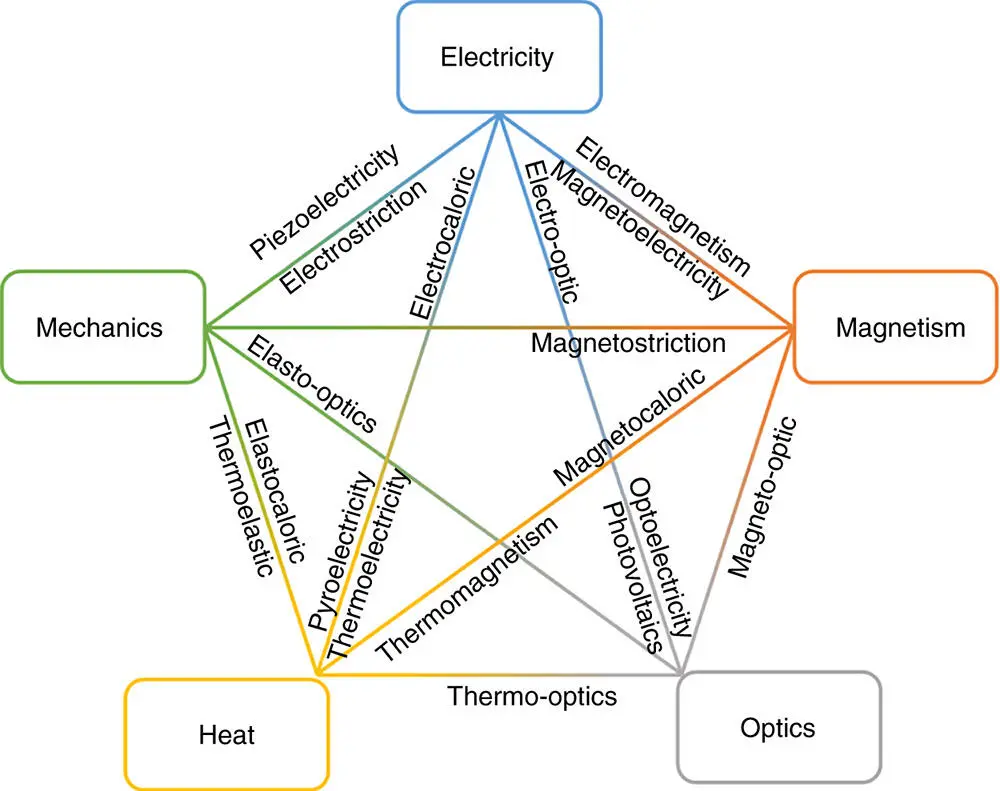
Figure 1.5Diagram showing coupling between different moduli and the clarification of smart materials.
1.2 Device Application of Ferroelectric Materials
When people talk about applications of ferroelectric materials, the first thing jumps out is most possibly the PZT (lead–zirconium–titanate with chemical formula Pb(Zr xTi 1−x)O 3), which is known as an excellent piezoelectric material. As the most popular ferroelectric, PZT is also the most important piezoelectric material in commercial applications. Piezoelectric materials have very broad applications in many fields, from medical ultrasound imaging to ultrasonic wire bonding machine in semiconductor industry, from pressure sensors to accelerometer, etc. The market size of piezoelectric materials is more than US $1 billion now and is expected to be US $1.68 billion by 2025 (GRAND VIEW RESEARCH).
Another field of application of ferroelectric materials is the infrared sensors based on their pyroelectric property, which is also one of the most important properties of a ferroelectric material. Beyond these well‐known applications, another important application based on the switching of ferroelectric polarization is the non‐volatile memory device such as FeRAM. Examples are given in the following and details will be introduced in the following chapters.
1.2.1 Piezoelectric Device Applications
An example of smart system using piezoelectric material is the distance radar system in a car or a sonar system in submarines as shown in Figure 1.6, where the key sensing element is based on piezoelectric material to realize the conversion between electrical energy and acoustic energy for sending and receiving sound waves. Other application examples of piezoelectric devices include active damping system, micro‐scanning system in scanning probe imaging instrument (such as AFM), force sensor, accelerometer, energy harvesting, etc.
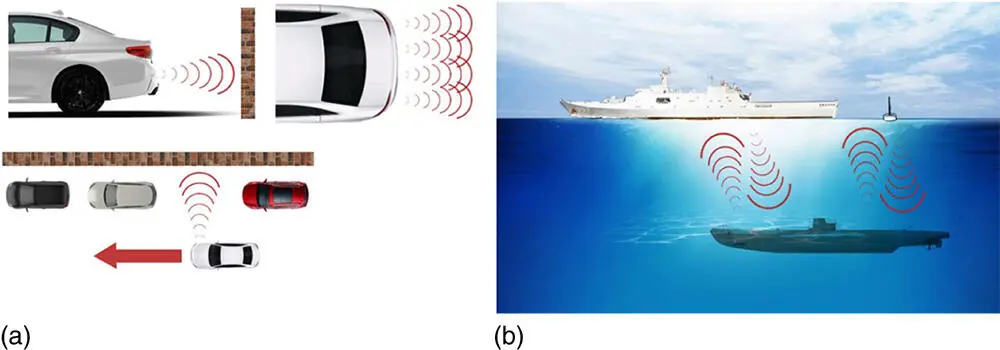
Figure 1.6Piezoelectric materials‐based sonar system for car (a) and submarine (b).
Medical ultrasound imaging system with piezoelectric material as the transducer to convert electrical and acoustic energies is another very good example of device application where the piezoelectric material plays the roles of sensing and actuating functions. Figure 1.7shows photos of ultrasound transducers developed in our group. Knowledge in ultrasound transducer fabrication, characterization, and applications will be intensively introduced in Chapter 6.
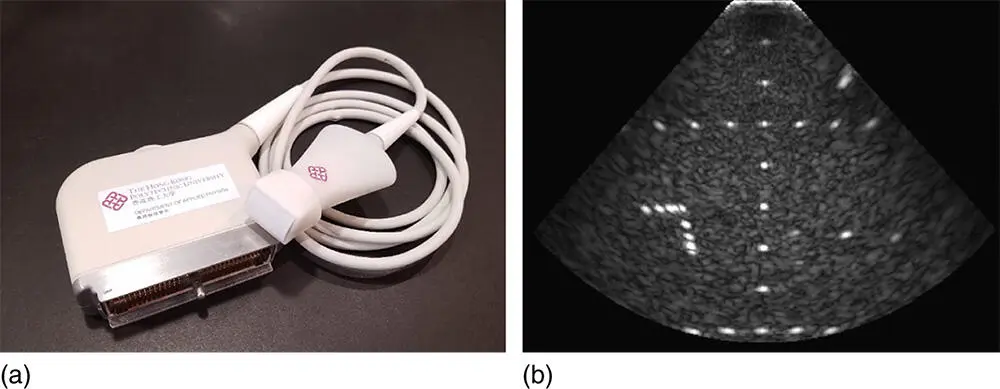
Figure 1.7(a) Transducers and (b) B‐mode image of a wire phantom acquired with PolyU‐made array ultrasound transducer.
A very new application example is piezoelectric‐based fingerprint ID system in mobile phone. The currently used finger identification system is based on capacitance measurement to obtain two‐dimensional (2D) information of fingerprint, but it faces the problem of difficulty to identify the fingerprint when the finger is dirty or wet. Ultrasound fingerprint identification system based on piezoelectric ultrasonic transducer and imaging system can obtain a three‐dimensional image of fingerprint with a certain depth. This can overcome the problems of the current fingerprint identification system in most mobile phones. InvenSense, Inc. is one of the main suppliers of this solution, and Figure 1.8is an illustration of the ultrasonic fingerprint system.
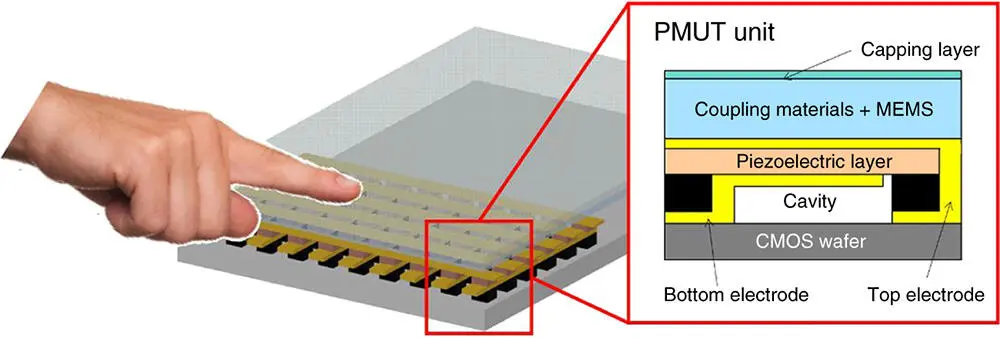
Figure 1.8Illustration of concept of a ultrasonic transducer‐based fingerprint ID system based on complementary metal‐oxide‐semiconductor micro‐electro‐mechanical systems (CMOS‐MEMS) technology.
An infrared sensor is usually made of a ferroelectric material, which is also pyroelectric that generates surface electric charges when exposed to heat in the form of infrared radiation. A pyroelectric‐based infrared sensor can detect the temperature change but produce no response for a steady temperature since the pyroelectric sensing element can only produce polarization change‐induced electric charge when the sensor is subject to temperature change. Figure 1.9a shows a photo of a real infrared detector with its internal device structure illustrated in Figure 1.9b, where the active element is made of pyroelectric materials such as LiTaO 3. Those pyroelectric materials with their polarization able to be switched are ferroelectrics. Therefore, pyroelectric sensors that are widely used as infrared detectors are important device applications for ferroic materials in a smart system.

Figure 1.9A photo of an infrared detector (a) and illustration of its internal structure (b).
Читать дальше
